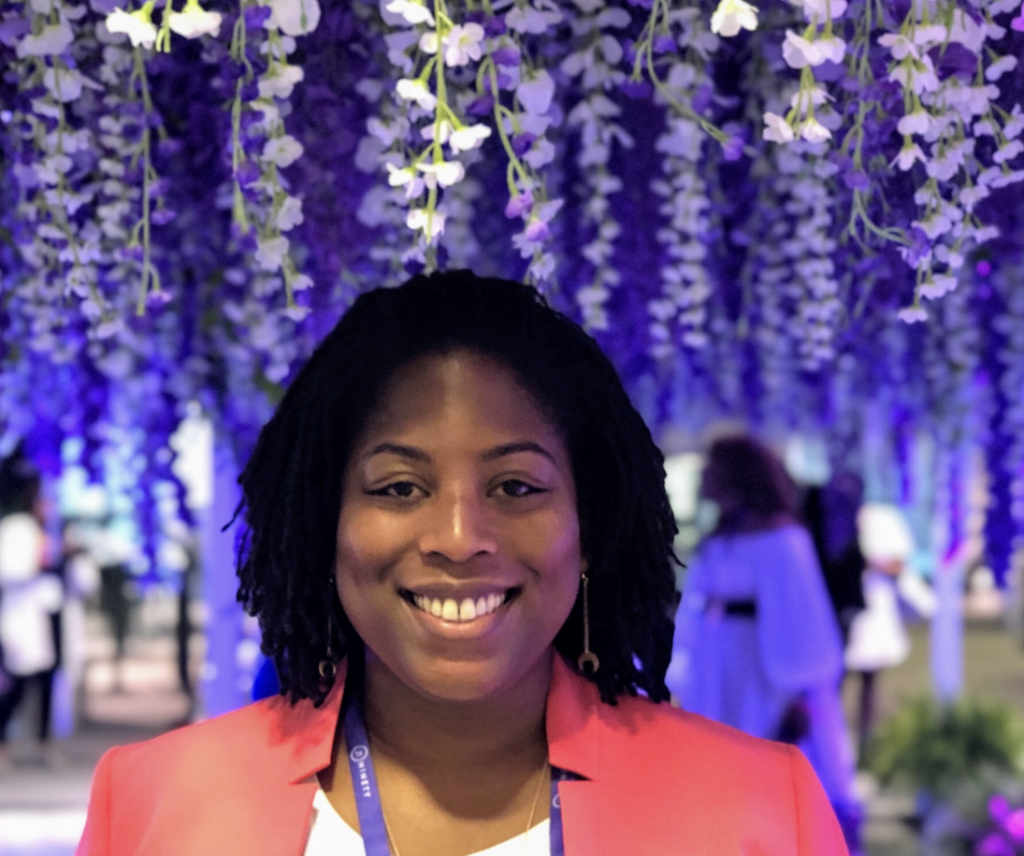Allow me to tell you a story about why a doe eyed woman, eager to change the world, founded Mobility Match…
When I was blessed with the opportunity to run a program created to improve patient quality of life, I had no idea it would have such a profound effect on me and lead me to where I am today. I thought I was under-qualified, but I am always up for a challenge. I came into my new position as a Senior Program Specialist at one of my dream job locations to manage a program with the potential to change how health care and transportation partners, in Atlanta, worked together to benefit all stakeholders and the community we serve.

I have always wanted to make a difference in people’s lives. In college, I studied psychology so that I could better understand human behaviors and believed it to be a universal skill that can be useful across many career paths. At the time, I wanted to be a doctor. The type of doctor changed monthly, but a doctor none the less. After graduating from Spelman College where I learned how to love and believe in myself to better serve others, I moved back home and became a Certified Nursing Assistant. I needed to get some hands-on health care experience before I embarked on this long medical career journey because, at this point, I still could not decide between primary care or specialty. I quickly discovered that hands-on health care was not for me, after maybe the third time I had to suppress a gag reflex. As a psychology major, the idea of working to improve the health of large populations was never far from my mind. One of my professors in college was a member of the Uniformed Health Service Corp and she would wear her uniform to work every Tuesday. I was very impressed and thought she was someone I wanted to grow up to be. She was out there saving the world from disease one population at a time and still finding time to influence young Spelmanites on Tuesday evening. I did some informational interviews with my network and decided to pursue a master’s degree in public health. It was while attending Georgia State University School of Public Health that I found my true passion for wanting to be a change agent for health equity in our city and our world. I had the privilege of being a graduate research assistant working on built environment research. I was fascinated with the aspect of health that focused on looking at more than just taking trips to and from the doctor’s office, but instead, at what environmental factors led individuals to their health outcomes. Are they not exercising because they are lazy or is it because they do not feel safe walking in a neighborhood with no sidewalks and abandoned houses? Are they not making their appointments because they do not want to heed the doctor’s advice or is it because they do not have access to a car and the closest bus stop is three miles up the road with a narrow median and no sidewalks? The idea that we could treat people for illness and then watch them return to the environment that made them sick in the first place seems neglectful, which is one of the reasons I wanted to be a change agent working to address the social determinants of health.
I knew I wanted to work at the Atlanta Regional Commission when the executive director came to talk to my urban studies class about the impact they were making in Atlanta. I geeked out on the stats he provided about population size, water usage, transportation plans. I loved Atlanta and wanted to be a part of making it one of the best cities in America. I received an internship working on the Partnerships to Improve Community Health (PICH) grant right after graduation. I got to do walk audits, bike counts, I was a regular bike commuter, just living the intern dream. After 8 months of interning, I thought it was time to step it up and applied for an ORISE fellowship at the CDC, my other dream job location. I was the happiest little public health nerd working at the CDC. I worked in the NCCDPHP, DNPAO, PAHB on the translation and evaluation team. For those of you reading this not familiar with CDC acronyms, that is the National Center of Chronic Disease Prevention and Health Policy, Division of Nutrition, Physical Activity and Obesity, Physical Activity and Health Branch. I had the opportunity to work with some of the most well respect people in the field, I got to help edit publications (and I was even credited on a few) and help different regions implement some of their physical activity objectives. It was a dream but since fellowships are only a year long, the time had come for me to look for full-time employment (with benefits, as my mom would say). The perfect opportunity opened up when I saw my other dream job location post a position that I thought was right up my alley as the Rides to Wellness Coordinator. Public transportation? Check! Health care? Check! Getting out into the community and interacting with the people I serve? Check and check! At the time it was my first big girl job, but looking back now, I think It was fate (and yes, I believe in that sort of thing).

The Rides to Wellness program was a nationwide pilot program but in Atlanta we chose to focus on the intersection of health care and public transportation. The goals for the program were to reduce missed health care appointments, reduce health care cost, increase partnerships between health and transportation providers, and increase patient quality of life. The plan for Atlanta was to partner with MARTA and four area health systems to provide complimentary transit passes to patients identified as missing 3 or more appointments in the last 6 months. In addition, we helped enroll patients into the reduced fare or paratransit programs and provided travel training for those who needed it. After 18 months and 213 patients, we saw an increase of 3 healthy days gained and a 68% increased appointment adherence. As for the cost effectiveness, we averaged about a $2 per round trip cost because so many patients ended up being eligible for MARTA’s reduced fare program. None of this could have been achieved without the collaborative partnerships between MARTA and our health care partners at Grady, who provided much of the necessary data to show real improvements over time.
The real reward besides the data and the cost savings was the impact this program had on the people we served. I personally interacted with all 200+ people in the program. I heard so many stories about how the program impacted people’s health because it “helped me get to my appointments” and even “you cured my diabetes” (note: I did not cure anyone’s diabetes but I was told this by someone who was better able to manage his diabetes because he was actually able to maintain his continuum of care). I also received feedback about how the program positively impacted people’s lives as a whole because it “helped me turn my life around,” “helped me get to interviews and now I have a job” and “this helped me get back on my feet and now I am able to work again.”
These people are why I do what I do. I am still that doe eyed girl who entered Spelman College with a dream of changing the world, but now I have a little more experience to back me up and help me navigate the world I want to leave more beautiful each day.
